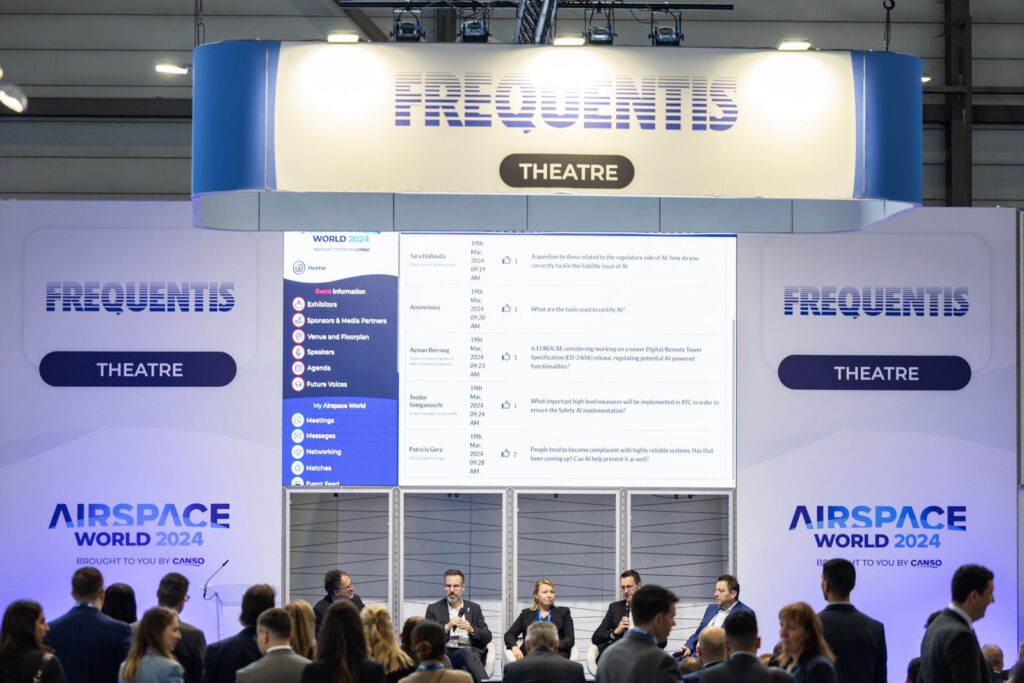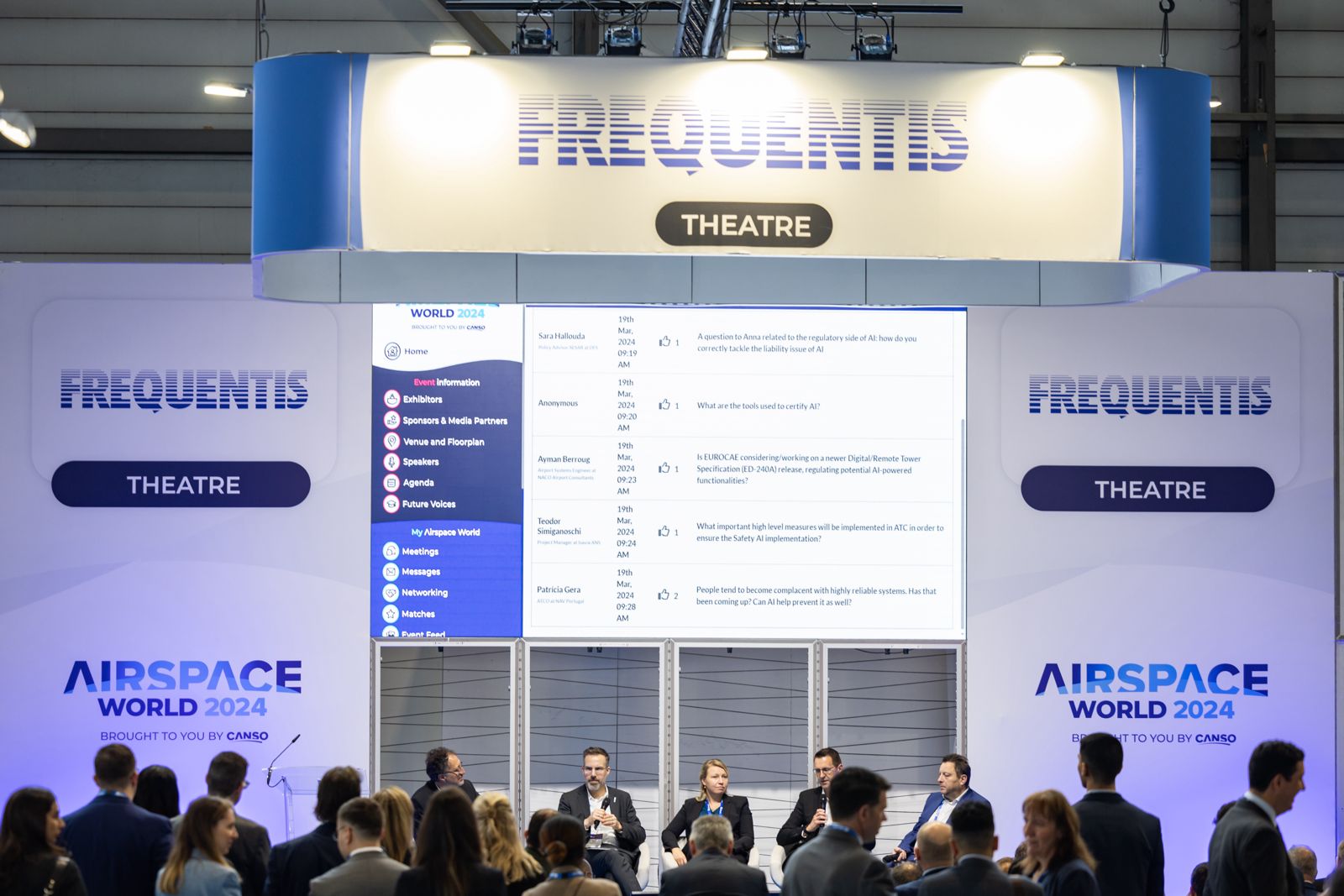Artificial intelligence (AI) once again took centre stage at the Frequentis Theatre, with panellists discussing how artificial intelligence is transforming air traffic management.

The conversation kicked off with a discussion of what exactly should be termed AI. NATS, the UK air navigation service provider (ANSP), has recently launched an AI policy and adopted a broad definition. For NATS, AI is anything that can support a human in his or her tasks or indeed undertake a task normally performed by a human.
It was also pointed out that AI is decades-old, and many companies have used AI for some time, depending on the definition. Frequentis, for example, developed a speech recognition programme that used AI many years ago.
A key point was that full automation that is reliant on AI is a long way off. For many years to come, AI’s role will be in decision support for air traffic controllers and other staff. This will build the trust and experience that will be essential to embracing the full potential of AI. The technology can also be used for monitoring and analysing.
Areas where AI can make an initial impact include weather prediction, digital twin scenarios, predictive maintenance and training. When getting a controller from “street to seat”, for example, AI can look at a student’s progress to ensure simulations are tailored to cover any possible shortfalls in knowledge.
AI is already playing a role mirroring time-based separation at London Heathrow. It was revealed that, generally, AI takes a safer approach than is absolutely necessary, but this is helping to inform the parameters that need to be put in place.
One of the biggest challenges ahead is certification. EUROCAE is working hard on a standard that will align Europe with the United States and also connect with other parts of the world. This work will be a cornerstone of AI development and a key enabler for progress.
Generative AI (Gen AI) is another step, however, because this rewrites its own code, thus defining how to certify Gen AI will be a long and difficult process.
Overall, however, AI will have a positive impact on ATM. It will enhance productivity, performance and resilience while providing the platform for future developments. But the form of these future developments is anybody’s guess!


